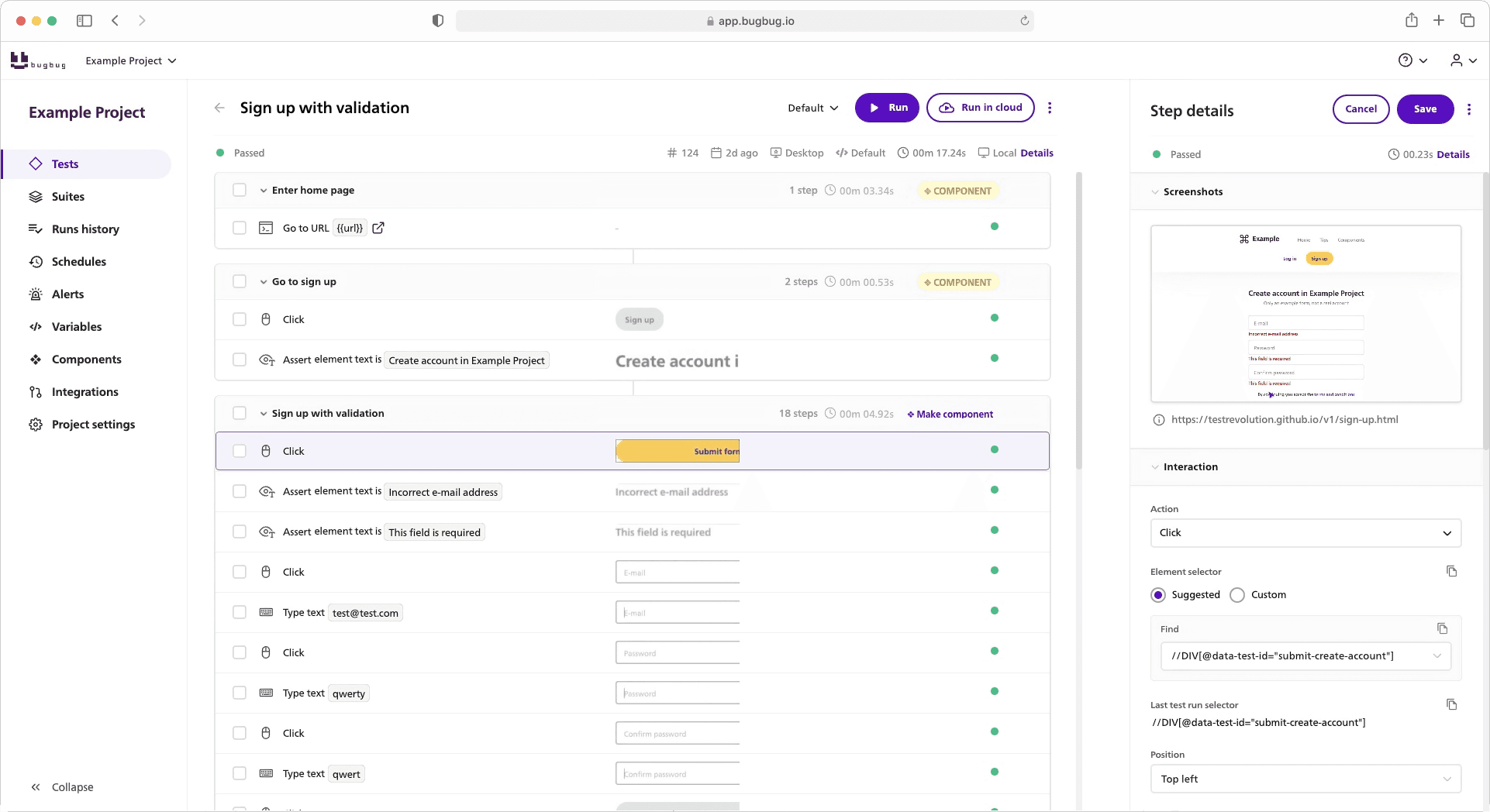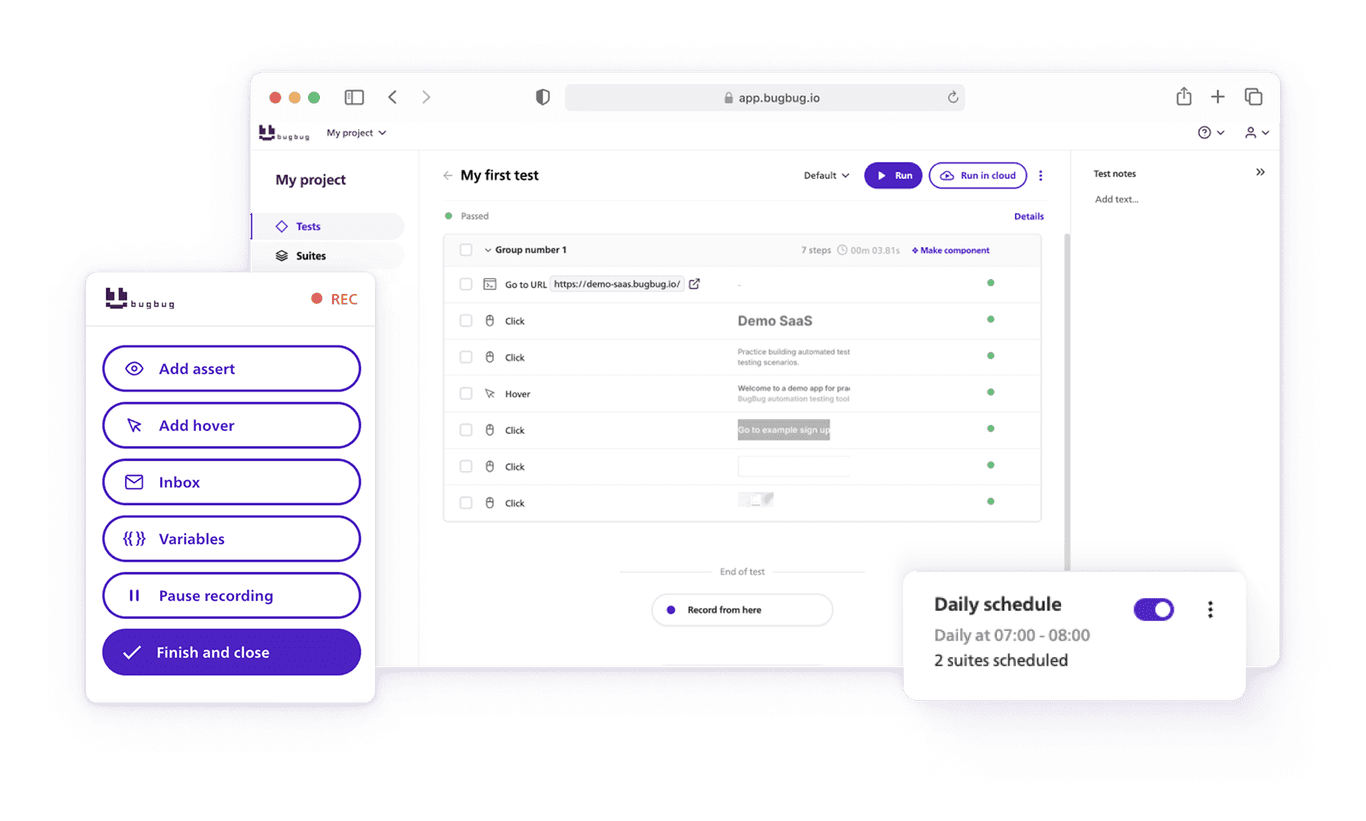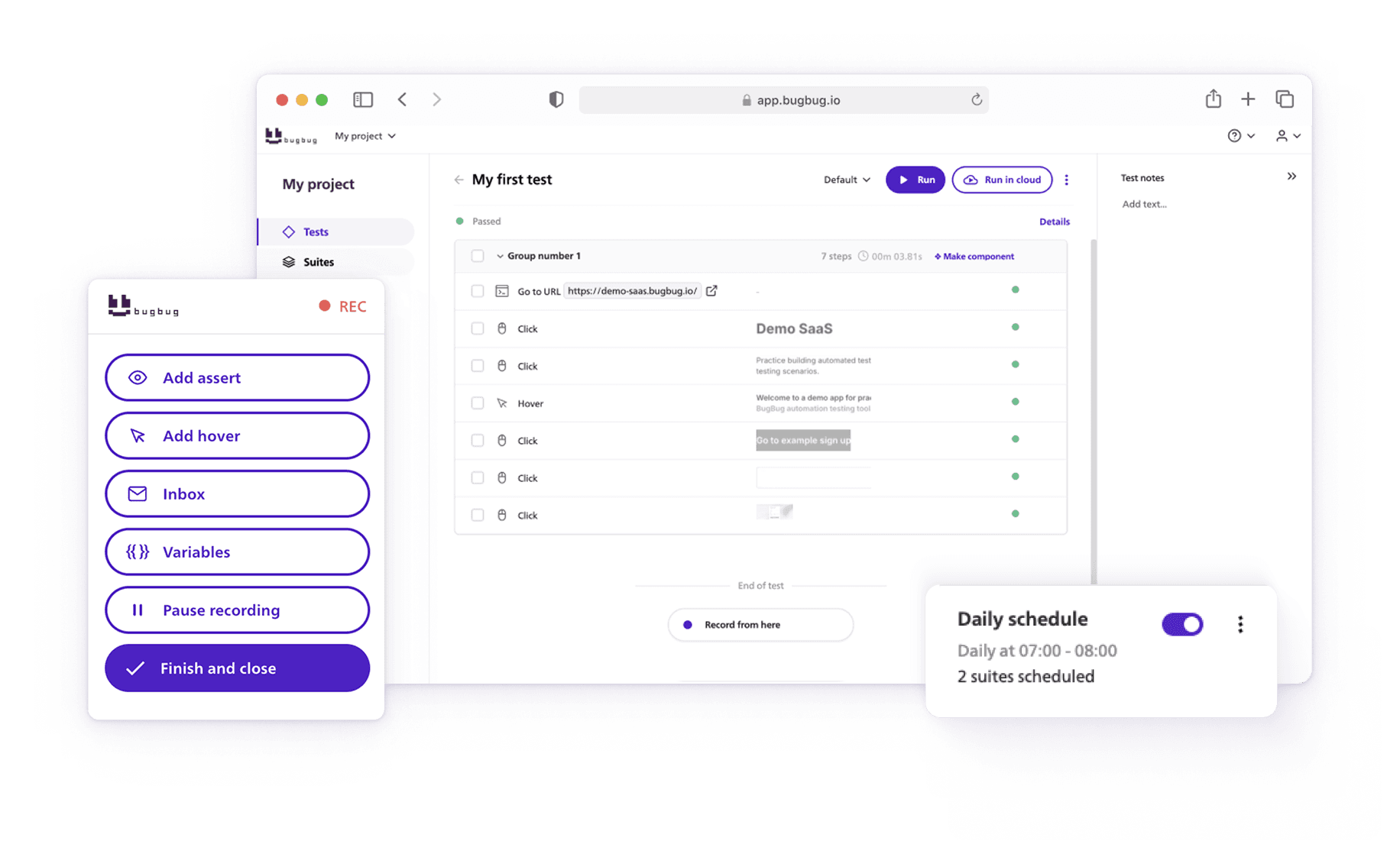🤖 Summarize this article with AI:
💬 ChatGPT 🔍 Perplexity 💥 Claude 🐦 Grok 🔮 Google AI Mode
End-to-end (E2E) tests are a cornerstone of modern software quality assurance. They simulate real user workflows, ensuring that critical paths — like login, checkout, or onboarding — work across the entire system.
But while they’re valuable, they’re also notoriously slow, brittle, and expensive. A test suite that takes 90 minutes to run can derail a team’s velocity, delay deployments, and frustrate engineers waiting for green builds. In fast-paced teams, every wasted minute compounds into real costs.
🎯 TL;DR - How To Speed Up E2E Testing?
- Slow E2E tests drain team velocity — long runtimes, flakiness, and infrastructure overhead make them a bottleneck in agile workflows.
- Smarter test design is key — focus on critical flows, introduce smoke suites, modularize tests, and replace hard waits with conditional logic.
- Optimize infrastructure & tooling — parallelization, cloud execution, lightweight frameworks like BugBug, and better test data management speed up execution.
- CI/CD pipelines need discipline — use caching, parallel jobs, selective execution, and fast feedback loops to accelerate delivery without sacrificing coverage.
- BugBug simplifies everything — no extra infrastructure, fast debugging with Edit & Rewind, built-in email testing, and seamless CI/CD integration make it ideal for lean teams.
Check also:
- 🎯 TL;DR - How To Speed Up E2E Testing?
- Why speed matters in E2E testing?
- Common reasons why E2E tests become slow
- Test design strategies for faster execution
- Infrastructure & tooling optimizations
- How to speed up E2E testing in CI/CD pipelines?
- Workflow improvements
- How BugBug helps teams run faster, more efficient E2E tests
- Conclusion: Balancing speed and reliability in modern QA
- FAQ: How to Speed Up E2E Testing
Why speed matters in E2E testing?
The good news? You don’t have to accept sluggish E2E tests as inevitable. With smart design, infrastructure choices, and CI/CD optimization, you can dramatically reduce execution time without sacrificing reliability. This guide breaks down practical strategies you can adopt — plus how lightweight tools like BugBug give teams an edge over heavyweight frameworks.
💡 If you’re new to the basics, see our complete guide to SaaS testing and tools for a wider perspective on modern QA practices.
Common reasons why E2E tests become slow
Before optimizing, it’s crucial to understand where the time goes. In most teams, E2E testing slowness stems from a combination of factors:
- Over-testing: Teams try to cover every possible edge case with UI tests instead of pushing those checks down to unit or integration layers.
- Poor test design: Monolithic flows with dozens of steps, redundant actions, and unnecessary waits make tests longer than they need to be.
- Heavy infrastructure: Traditional Selenium setups with grids, Docker containers, or VMs introduce overhead that slows execution.
- Network dependencies: When tests rely on live APIs or third-party services, network latency and instability creep in.
- Flakiness: Instability leads to retries, further inflating runtime and eroding trust in the suite.
The combination often leaves teams with bloated, fragile test suites that take hours to complete — a nightmare in agile environments.
Start e2e tests in 5 minutes
Test easier than ever with BugBug test recorder. Faster than coding. Free forever.
Get started
Test design strategies for faster execution
Speed starts at the design level. How you write and structure tests directly impacts execution time.
-
Selective testing
Not every scenario deserves an E2E test. Focus on critical business workflows: checkout, sign-up, authentication. Push lower-level checks to unit or API tests. -
Smoke test suites
Introduce a minimal set of tests (e.g., login, checkout, dashboard load) that run on every pull request. Reserve full regression suites for nightly runs or staging environments.💡 Learn more about this approach in our piece on smoke testing with BugBug.
-
API stubbing & mocking
Instead of waiting for real payment providers or email services, mock those calls. This makes tests faster and more stable. -
Modular test design
Break down long test cases into smaller, reusable modules. This reduces duplication and makes failures easier to debug. -
Smarter waits
Replace hard-coded timeouts (e.g.,sleep(5)) with conditional waits that move forward as soon as the UI is ready.
These design principles can cut execution time dramatically while improving reliability.
Infrastructure & tooling optimizations
The next layer of speed lies in how and where your tests run. For related practices, see our web testing tools guide.
- Parallelization
Running tests sequentially is a guaranteed bottleneck. Most modern frameworks and cloud providers support parallel execution, allowing you to split test suites across multiple environments. - Cloud execution
Instead of maintaining your own Selenium grid, leverage cloud platforms for elastic scaling. You pay only for the resources you need during execution. - Lightweight frameworks
Traditional setups like Selenium and Cypress often demand extra infrastructure. Tools like BugBug eliminate this overhead — no Docker, no VMs, no grids — meaning tests start faster and run leaner. - Test data management
Slow database setup can be a hidden bottleneck. Use fixtures, snapshots, or pre-seeded datasets to ensure your tests don’t waste time generating data from scratch.
Together, these optimizations attack the runtime problem from the execution side, making your suite scale with your CI/CD demands.
💡 For additional design insights, see our article on website testing navigation
How to speed up E2E testing in CI/CD pipelines?
Your CI/CD pipeline is where testing speed matters most. If every commit triggers a sluggish test run, you’re throttling delivery.
Here’s how to accelerate E2E tests in pipelines:
- Caching dependencies
Avoid reinstalling packages or downloading browsers from scratch. CI systems like GitHub Actions and GitLab CI/CD support caching to shave minutes off builds. - Parallel jobs
Distribute test subsets across multiple machines. For example, split tests by tags (smoke, checkout, dashboard) to run simultaneously. - Conditional test execution
Don’t always run the entire suite. Use change detection to run only impacted tests based on the files modified in a commit. - Fast feedback loops
Run smoke tests on every PR for quick confidence. Reserve full regression for staging or nightly runs. This avoids bottlenecking developers. - Lightweight containers
Keep Docker images minimal. Use pre-baked images with all dependencies installed to reduce setup time. - Pipeline hygiene
Isolate flaky or long-running tests so they don’t block unrelated builds.
A real-world case: one SaaS team reduced total runtime by 60% by splitting their tests into smoke (PR-level), regression (staging), and exploratory (manual).
Workflow improvements
Even with good design and CI/CD setup, workflow plays a huge role in test speed. For context on broader approaches, see our e-commerce testing guide.
- Test prioritization
Always ask: does this scenario need an E2E test? Push checks down to cheaper levels (unit, integration). - Continuous maintenance
Treat your test suite like code. Regularly prune, refactor, and remove redundant tests to prevent bloat. - Flakiness reduction
Fix brittle selectors, adopt retry strategies cautiously, and remove unstable dependencies to reduce reruns. - Team collaboration
Bring developers and QA engineers together in reviews. Many slow or redundant tests exist simply because of siloed decision-making. - Shift-left mindset
Catch issues earlier with unit and integration testing, reducing the load on E2E.
Workflow discipline ensures your suite stays lean and avoids creeping back into slowness.
How BugBug helps teams run faster, more efficient E2E tests

Most of the strategies above apply regardless of tooling — but your choice of framework can either accelerate or drag down execution. This is where BugBug shines:
👾 No extra infrastructure
BugBug runs out of the box, with no need for Selenium grids, VMs, or Docker setups. That instantly removes the heaviest performance overhead.
👾 Cloud + local execution
Quickly validate changes locally, then schedule runs in the cloud for scaling. This gives teams flexibility without complexity.
👾 Fast editing & debugging
BugBug’s Edit & Rewind lets you jump into failed steps, fix them, and rerun without starting from scratch. That alone can save hours of wasted debugging time.
👾 Built-in email testing
Instead of spinning up test mail servers, BugBug includes email testing directly — cutting setup and execution time.
👾 Seamless CI/CD integration
Easily trigger BugBug tests from pipelines without slowing builds, supporting the fast-feedback workflow modern teams rely on.
For startups and small teams in particular, BugBug provides the fastest path to reliable E2E testing without the infrastructure burden.
Conclusion: Balancing speed and reliability in modern QA
End-to-end testing doesn’t have to be a bottleneck. By combining smart test design, infrastructure optimizations, CI/CD improvements, and disciplined workflows, teams can significantly reduce runtimes.
The key is finding balance: cover what matters, run it fast, and keep it stable. And with tools like BugBug, you don’t just save time — you also reduce infrastructure complexity, making testing accessible to lean teams.
In a world where release cycles get shorter and user expectations higher, faster E2E testing is not just nice to have — it’s essential.
Happy (automated) testing!



